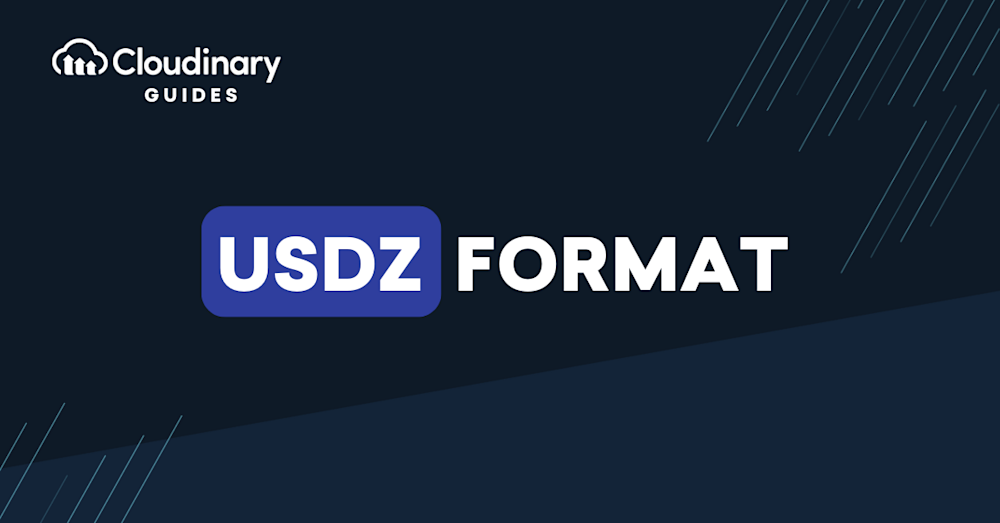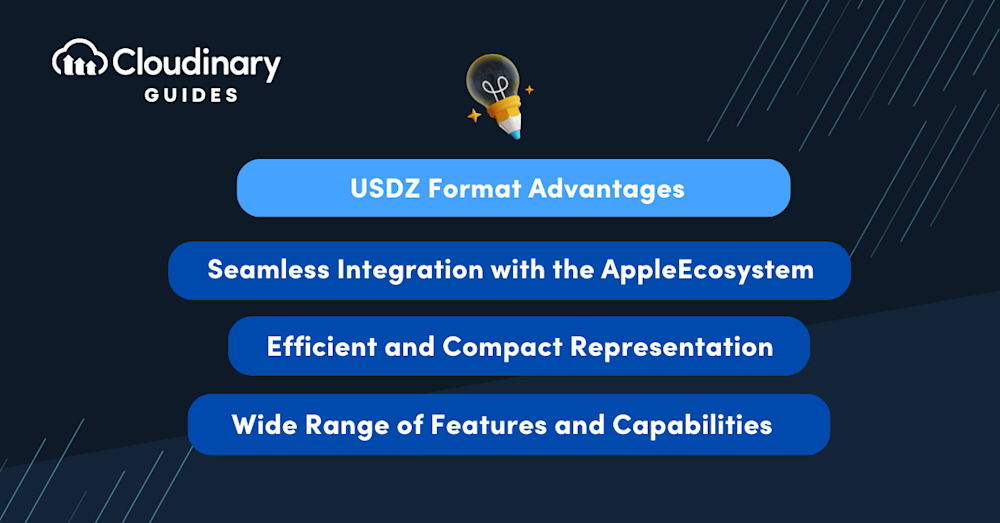What Is the USDZ File Format?
The USDZ file format is a new and innovative format designed for sharing of 3D assets across various platforms and devices. USDZ stands for Universal Scene Description Zip, a compressed 3D file format developed by Apple in collaboration with Pixar. This file format is designed to be highly optimized for sharing 3D objects, scenes, and animations on Apple devices, making it an essential tool for digital creators working in the augmented reality (AR) and virtual reality (VR) space.
The USDZ format is a single, self-contained file format that includes all the necessary information to display a 3D object or scene without any external dependencies. This makes it easy for digital creators to package their 3D content in a single file and share it with their audience seamlessly.
At its core, the USDZ format is based on Pixar’s Universal Scene Description (USD) framework, which is a powerful and flexible system for managing complex 3D scenes and assets. By leveraging this framework, the USDZ format is able to provide a wide range of features and capabilities that make it an ideal choice for digital creators working in the AR and VR space.
This is part of a series of articles about image formats
In this article:
USDZ Format Specification
The USDZ format is built on top of the Universal Scene Description (USD) framework and utilizes a combination of technologies to provide a compact and efficient representation of 3D assets. Here are its main components:
USD Layering and Composition
One of the key features of the USDZ format is its support for layering and composition. This allows digital creators to build complex 3D scenes and assets by combining multiple layers of data in a non-destructive manner. Each layer can contain different types of data, such as geometry, materials, textures, and animations, which can be combined and overridden to create the final scene or object.
PBR Materials and Textures
The USDZ format supports physically-based rendering (PBR) materials and textures, which enable digital creators to create realistic and high-quality 3D content. PBR materials are designed to mimic the real-world properties of materials, such as metal, plastic, and glass, by simulating the way light interacts with their surfaces. This results in more accurate and realistic rendering of 3D objects and scenes, making the USDZ format an excellent choice for digital creators looking to create immersive AR and VR experiences.
Animation and Rigging
In addition to static 3D assets, the USDZ format also supports animation and rigging data, allowing digital creators to create dynamic and interactive 3D content. This includes support for skeletal animations, blend shapes, and vertex animations.
USDZ File Types
Only specific file types, which are compatible with the USD runtime, can be included in a usdz package. These files must support consumption via mmap, direct memory pointers, or have threadsafe access to a FILE * (such as pread-like operations). Consequently, formats like Alembic are not currently supported. The permitted file types include:
- USD format files such as .usda, usdc, and usd. Note that Apple’s current implementation of usdz packages limits them to a single .usdc file, but this limitation is expected to be removed in upcoming OS updates.
- Image and texture files in formats such as .png, .jpeg (including all common extensions for JPEG), and OpenEXR. More details on these supported image formats can be found under Working With Image File Formats.
- Audio files embedded in formats such as .m4a, .mp3, and .wav, listed in order of preference
Use Cases of USDZ Format
Some of the most common use cases for the USDZ format include:
Augmented Reality (AR)
One of the primary use cases for the USDZ format is in the creation and distribution of AR content for Apple devices. With its efficient and compact representation of 3D assets, the USDZ format is ideally suited for streaming and displaying 3D content in real-time AR applications. This makes it an essential tool for digital creators working with Apple’s ARKit framework.
eCommerce and Product Visualization
The USDZ format is also well-suited for use in eCommerce and product visualization applications. Its support for PBR materials and textures enables digital creators to create highly realistic 3D representations of their products, which can be easily shared and displayed on a variety of platforms and devices. This allows customers to view and interact with 3D product models.
Architectural Visualization
The USDZ format’s support for complex scene composition and layering makes it an excellent choice for architectural visualization projects. Digital creators can use the USDZ format to create detailed and accurate 3D representations of architectural designs, which can be easily shared and viewed on various platforms and devices. This enables architects, designers, and clients to explore and interact with 3D architectural models in a more immersive and intuitive way.
Learn about an alternative 3D format in our guide to GLB
Looking for a centralized location to manage all your media assets? Cloudinary’s Media Library makes it easy to upload, store, manage, and deliver images and videos efficiently.
USDZ Format Advantages
The USDZ format offers numerous advantages for digital creators working with 3D content, including:
Seamless Integration with the Apple Ecosystem
As a file format developed by Apple in collaboration with Pixar, the USDZ format is designed to be natively supported by Apple devices, including iPhones, iPads, and Macs. This ensures a seamless and consistent experience for users when viewing and interacting with USDZ content on these devices.
Efficient and Compact Representation
The USDZ format is designed to be efficient and compact, making it ideal for sharing and streaming 3D content across different platforms and devices. Its compressed, single-file format makes it easy for digital creators to package and distribute their 3D content, while its optimized representation ensures fast loading times and smooth performance.
Wide Range of Features and Capabilities
The USDZ format is built on the powerful and flexible USD framework, providing digital creators with a wide range of features and capabilities. This includes support for complex scene composition and layering, PBR materials and textures, and animation and rigging data, making it a versatile and comprehensive solution for digital creators working with 3D content.
USDZ Format Limitations
While the USDZ format offers many advantages for digital creators, it also has some limitations that should be considered:
Platform Compatibility
One of the main limitations of the USDZ format is its focus on the Apple ecosystem. While the format is natively supported on Apple devices, its compatibility with other platforms and devices may be limited. This may require digital creators to use additional tools or file formats when working with non-Apple platforms and devices.
Limited Features Compared to Other 3D Formats
While the USDZ format provides a wide range of features and capabilities, it may not support some advanced features found in other 3D file formats, such as FBX, OBJ, or GLTF/GLB. This may include certain types of lighting, shading, and rendering techniques, which may require digital creators to use alternative file formats or tools when working with these features.
All about USDZ with Cloudinary
Converting and managing USDZ files can be a difficult process. That’s where Cloudinary comes in, offering powerful and easy-to-use tools for working with 3D models.
Cloudinary supports USDZ models alongside many other popular 3D asset formats. You can upload and transform USDZ models with just a few clicks.Thanks to Cloudinary’s powerful API and user-friendly interface, you don’t need to be a 3D expert to work with USDZ files.
Whether you’re creating AR experiences or showcasing your 3D models online, Cloudinary has the tools you need to succeed. Try out USDZ support on Cloudinary today and take your 3D modeling to the next level.


